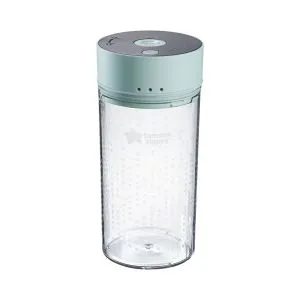The potential challenges of mixed feeding a baby
Before you begin combination feeding, consider the fact that bringing a bottle into the mix can sometimes affect the amount of breast milk you produce. Also, some babies might struggle to latch on or breastfeed because they need to use a different sucking action when feeding from a bottle.
Reducing breastfeeds can also increase the risk of getting sore nipples, blocked milk ducts, or mastitis.
Don't worry too much though. If you start bottle feeding your baby when they're a little older, you're both comfortable with breastfeeding and continue to breastfeed and express using a pump frequently, your breast milk supply shouldn't be impacted.
If you're concerned that you have a low breast milk supply, it may help to seek help from a lactation expert before you start mixed feeding.
When can you start mixed-feeding babies?
The WHO and UNICEF recommend exclusive breastfeeding for the first six months of life, and you should you should speak to your health visitor before you begin combi feeding.
It's recommended that parents wait until their baby is comfortable with breastfeeding before bringing a bottle of expressed breast milk or formula into the mix.
It can help for babies to be exclusively breastfed for the first six to eight weeks to help establish a good latch and a great routine. After this time, you can think about introducing a bottle if you want.
When you first introduce a bottle:
- Make sure that your baby is happy, relaxed, and not too hungry
- Ask someone else to give them the bottle - your baby might not feed from a bottle at first if they can sense that your breasts (and breast milk) are close by
- Try different feeding positions
- Use a bottle with a breast-like teat
- Stay patient and calm - it's normal for a baby to not accept a bottle right away.
How to combination feed
Mixed feeding may come easy to some but may be a bit more of a challenge for others. Let's run through how to mix feed with either expressed breast milk or formula.
How to mix feed with expressed breast milk
If you'd like to combine breastfeeding with expressed milk feeds, you'll need a breast pump to collect your breast milk to give to your baby in a bottle.
Parents often find that when they express breast milk in the morning, they're able to collect more in a shorter amount of time. But it's also worth noting that expressing at night helps to maintain your long-term milk supply, so try to do both if you can.
It's also important that you carry on breastfeeding or expressing regularly from each boob. If you don't, there's a chance that your boobs can become painful and engorged.
How to mix feed with formula
Before introducing formula feeds into your baby's routine, you should speak to your health visitor.
If you'd like to combine breastfeeding and formula feeding, it's recommended that you introduce your little one to formula gradually. Not only does this give time for your body to reduce the volume of breast milk it produces, but it also allows your little one's digestive system plenty of time to adjust.
If you're introducing formula feeds because you're going back to work, it can help to start combination feeding a few weeks in advance. Establishing a good combination feeding schedule can help you get into the swing of your new routine.
Breastfeeding works on a supply and demand process, so it's important to remember that the more formula you feed a baby, the less breast milk your body will create. Combination feeding using formula can reduce the quantity of breast milk you make, so you should carry on breastfeeding your little one and expressing using a pump regularly if you want to keep your supply going.
What you'll need to mix feed
Before you get started, you should make sure you have all the feeding equipment you'll need, including:










